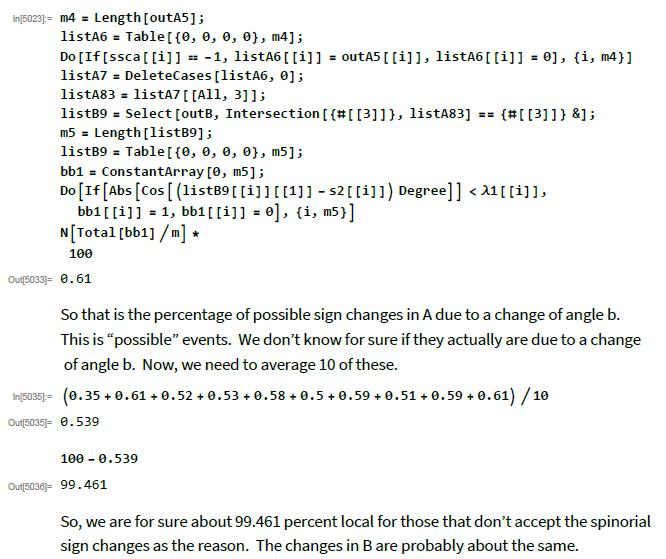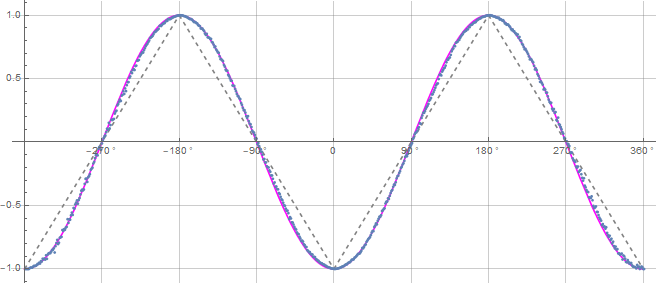FrediFizzx wrote:gill1109 wrote:Joy Christian wrote:.
Nice. But don't call it Fred's code. That is your code, just as John's code is John's code, not Fred's code. You will fool Bell-believers with your code, but nothing from you can ever fool me.
I don't call it Fred's code. I deliberately called it Fred's algorithm. Given the same angles and the same hidden variable "theta" it will generate exactly the same outcomes. It does exactly what Fred's code does. My code is concise, efficient. You might find it useful when trying to publish your results. Feel free to use it. Acknowledge John Reed if you do so - I learnt from him.
FrediFizzx wrote:John already confirmed that any non-locality would have to be via the sign changes. So, out of 10,000 trials we have an average of about 54 sign changes that could be possibilities. Out of those possibilities there were 19 events where a change in the angle b was associated with a change in output A. That puts us at about 99.81 percent local. 0.19 percent non-local is very insignificant.
Yes, the non-locality is via sign changes. There is a sign change in 20% of the trials.
No, it does not do what my code does and it is not my algorithm either. It is your non-local piece of junk.
More freakin' nonsense. There are
local spinorial sign changes in about 4.5 percent of the events. Out of that I narrowed down the possibilities to 19 events where a change in A was associated with a change in angle b out of 10,000 giving us 99.81 percent local events but 100 percent with the local spinorial sign changes. Your task would be to find the flaw in the above proof. But you are finished anyways! Your goose is cook! Time to get real, get over it and move on!



.
Your code, Fred, defines a mapping from triples (singlet direction, setting a, and setting b), to pairs of outcomes +/-1 for Alice and Bob. Experimenters may choose settings freely. Nature chooses the singlet angle uniformly distributed on the circle.
It is what it is. In 20% of the trials there is a sign flip on one side or the other (or both) influenced by the setting on the other side. Your results are completely in line with the latest research results on faking quantum correlations in classical computer simulations, published in excellent journals such as PNAS. Your technique is very original, congratulations! Your code has got nothing whatever to do with Joy's "theory", however.
You and Joy may call these sign flips local, spinorial, quaternionic, whatever you like. You can give whatever suggestive names you like to the variables and functions in your code. It doesn't change what your code actually does, which is the same as what John's and my code does, as is easy to verify. (To be more precise: the same as what your code did a few days ago. evidently, nothing very essential has changed).
Feel free to use the simplified version in future! It will help you get your work published. The debate will continue.



